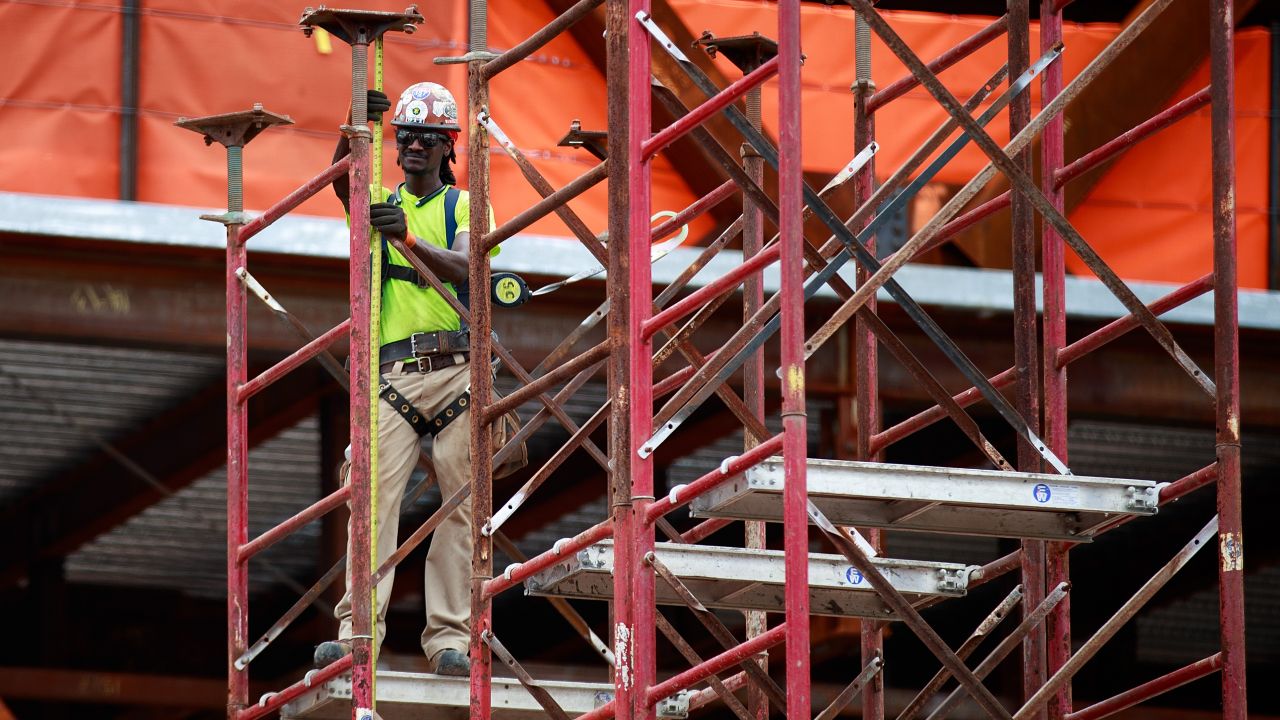
The working class and its concerns have been stereotyped in this campaign. The next president will need to tackle both with more nuance and urgency. (Photo by Drew Angerer/Getty Images)
At the end of most US presidential elections, most Americans are ready to see the last of campaign ads, social media commentaries and tension-fraught news coverage. That’s even more true this year. But more than in most recent elections, we shouldn’t expect the frustrations and divisions that have surfaced over the past 18 months to disappear after the ballots have been counted. Tensions over class and race, especially, may die down, but they aren’t going away. If a new president will take them on, something good might yet emerge from this ugly election.
Although it’s true that working-class voters are declining in number, they have drawn increasing attention over the past several elections, in part because, as Ruy Teixeira and his colleagues at The Democratic Strategist have been arguing for a while, they remain a crucial demographic. And this year, the white working class has not only been recognized as a key voting bloc, it has been an active player, demanding that the country and its leaders recognize the economy does not work for many Americans.
Amid far too many reports that have pinned Donald Trump’s success on the white working class, this year’s election coverage also has drawn attention to real problems, many of them rooted in class and racial inequalities. If the next president wants to succeed she (or he) must address what design experts call “wicked problems” — big, complex issues that resist simple explanations or one-dimensional solutions. It won’t be easy.
The election has created the conditions for addressing the first of those: class resentment. I don’t mean the resentment poor and working-class people feel toward the wealthy. I mean the resentment they feel toward a government that doesn’t seem to care about them or have the will to address economic inequality. I’m also talking about resentment toward a public discourse that denigrates and blames working-class people for not being more like the middle class. WNYC’s On the Media provided a terrific overview of that discourse in a series of reports about common and problematic assumptions that shape reporting on poverty. As host Brooke Gladstone explained, reliance on these assumptions generates media that reinforces the idea that people are poor because they don’t work hard or because they make bad choices. No matter how much we might deplore some of the behavior and attitudes that have surfaced in the election, we can’t address the class-based cultural divide by dismissing poor and working-class people as “deplorables” who lack the critical thinking skills that college education provides.
Good leadership could address class resentment not only with better policies — more on that below — but also by taking it seriously. While claims that Trump’s support comes primarily from the white working class are problematic, both he and Bernie Sanders won votes this year because they addressed working-class people’s sense of being left behind by the economy and put down by the media. Both also recognized a simple truth about American culture: Class is a central and increasingly important divide. A good president will acknowledge that, but also will lead the way in fostering deeper and more critical conversations about the economic, social and cultural roots of those divisions.
Of course, the cultural divide reflects a very real and serious economic gap, and a good leader must be willing to talk about its sources and consequences — including the way contemporary global capitalism, neoliberal ideology and technology drive economic changes that deepen inequality. We need to create more jobs through infrastructure projects among other strategies. But we also need policies that address not only the quantity of jobs but also their quality — what they pay, how they are structured and how workers are protected from exploitation as well as physical and psychological injuries. Raising the minimum wage is just a start. American economic leaders need to look critically at the effects of the “gig economy” and rising precarity, a term some scholars have coined to describe the uncertainty facing many workers who can’t count on a regular paycheck. Instead of pushing for everyone to go to college, we need to focus on ensuring that the thousands of working-class jobs that our economy will continue to produce are good jobs. This doesn’t necessarily mean bringing back manufacturing. It probably does mean bringing back the labor movement, with a broader and more inclusive social unionism.
Inequality doesn’t stem only from employment, however. As Jack Metzgar has argued, we need tax policies that focus less on the persistent fantasy of trickle-down economics and instead put cash into the pockets of the working class, who will spend it. We could expand the earned income tax credit and increase credits to help families pay for child care, housing or college. We also need to take another look at health care. The Affordable Care Act was a step in the right direction, with in its emphasis on providing insurance to those who hadn’t had it previously, but it still relies on the private insurance industry. It’s time to develop a single-payer system that puts first the needs of ordinary people, not those of a profit-based industry.
Perhaps the most troubling problem that has surfaced in this year’s election is racism. While some have challenged stories that present racism as a white working-class problem, we also know that racism and racial divisions are real problems for working-class people. Racism is a class issue, in multiple ways. First, racial division undermines the class solidarity that could generate social change movements. It also distracts people from the real source of their problems — not other poor and working-class people, but the economic and political system that, as Guy Standing has suggested, is rigged against workers and what, in today’s economy, he has named the “precariat.”
At the same time, racism presents a threat to working-class people. While the profiling and anxieties that underlie police violence toward black people sometimes target middle-class (and upper-middle-class) African-Americans, working-class black men are probably at greater risk. Here, too, we need policies that more forcefully address racial injustice and divisions, to ensure that citizens are protected by the police rather than needing protection from them. But we also need policies that facilitate more racial interaction. Among the most interesting insights on this year’s election was Jonathan Rothwell’s analysis of Gallup poll data, which revealed that Trump’s strongest support came from white people living in highly segregated areas. Racism is a structural issue, not just a matter of morality or attitudes, and we need to address it with policies that challenge housing and education segregation and inequities.
None of this is easy, and these “solutions” are as limited as they are idealistic. I’m sure there are better ideas out there. Our next president needs to find them. She (or he) must pay attention — not only to the anger and frustration of working-class people but also to the complex nature of the problems that generate those feelings.
In 2008, Barack Obama’s campaign tried to keep his supporters’ momentum going by creating Organizing for America, which became Organizing for Action, a network of community organizing groups that largely faded from the national picture. This year, we need more.
Whatever the result of Tuesday’s election, neither the media nor the new president should stop talking about and listening to the working class. It’s time to move from campaign mode to action, from courting working-class voters to addressing the conditions of their lives.




